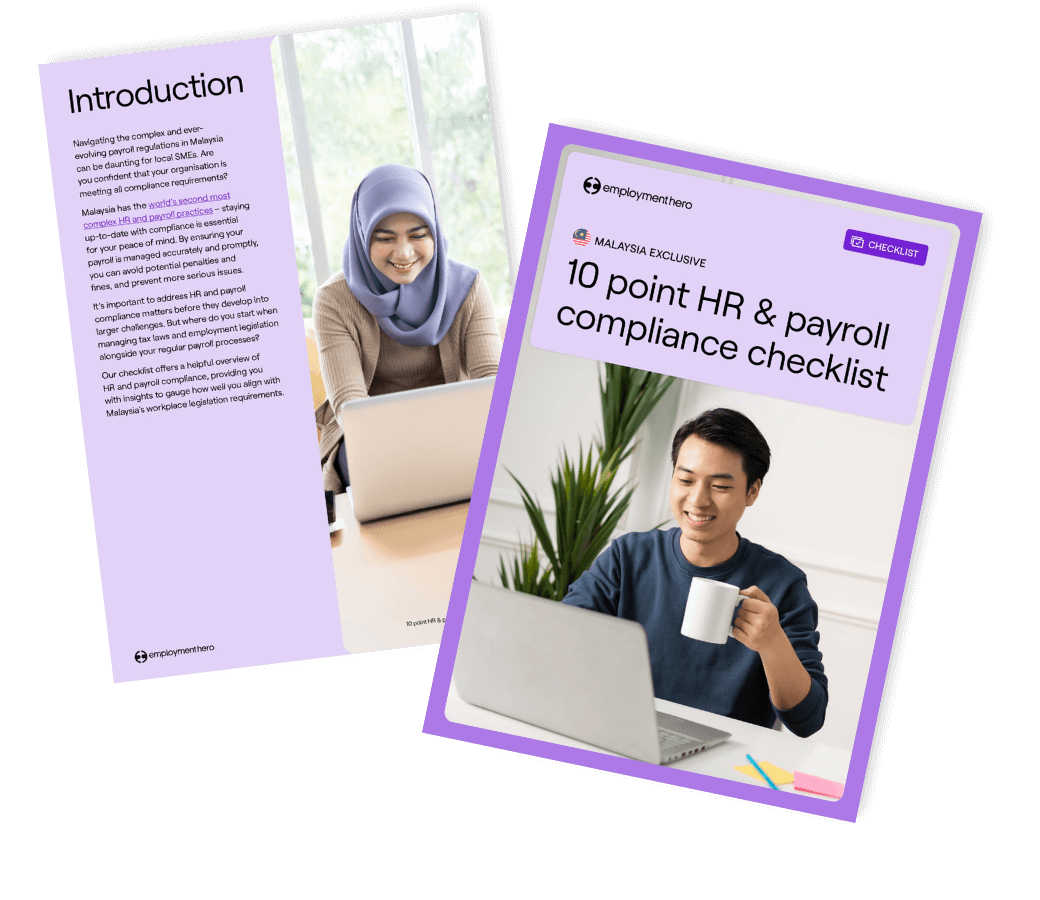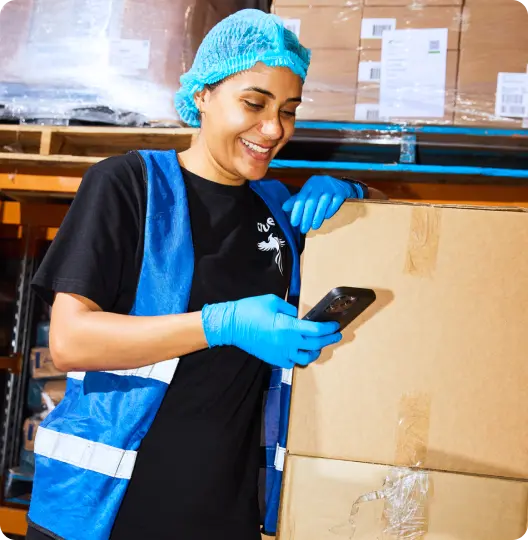Remote Work Report 2022
Published
Remote Work Report 2022
Where are you working from right now?
Home? The office? The couch? A cafe? A co-working space halfway across the world?
Wherever it may be, there’s a high chance it’s a different location to where you were working three years ago. Many of us have now mastered the art of remote work and it’s become a normal part of our everyday life.
Beyond the demands of the pandemic, will remote working — in a full time or hybrid capacity — remain an option for Malaysian small to medium-sized enterprises (SMEs)? By continuing to offer remote or hybrid options, could employers provide their staff with much wanted flexibility, improve productivity and reap other benefits?
While we can’t predict the future, we wanted to examine the current state of remote work, and how this might shape working trends. We’ve gathered responses from employees* across Malaysia to share their sentiments on how remote, hybrid and office working is shaping the future of work.
We hope this timely information, along with tips and suggestions from our employment experts, will help you better support your team in 2022 and beyond.
In this report, we cover:
- How the future of work is flexible;
- Social connection vs internet connection;
- A world of opportunity for everyone;
- Working and the rising cost of living;
- The changing role of automation and digital tools;
- What the future of work will look like; and
- Much more.
Download the report now.
*This report represents a segment we surveyed in the employment market. We are mostly examining data from ‘knowledge workers’, defined as workers with jobs which require them to work primarily on a computer or with documentation, rather than a job which is predominantly physical or location-bound.
Setting the scene
Through the ups and downs of the pandemic, we’ve learnt a lot about how we can adapt and innovate. From lockdowns to tight restrictions, a spike in cases to learning to live with Covid-19, we’ve adjusted to it all.
Yet, when it comes to work, we’re standing at a crossroads. Many employers have decided on a return to the office full-time for their staff, some have found middle ground with a hybrid working model, while others are championing remote working.
Key findings
1. The future of work is flexible
Despite support coming from both employers and employees to return to the office in some capacity, overwhelmingly, employees would still like to work remotely at least some of the time. Although 67% of Malaysian knowledge workers were happy to return to the office in some capacity after the MCO ended, this doesn’t mean that employees have abandoned the desire for remote working.
Our findings suggest that more than anything, employees are looking for flexibility. They want to enjoy the benefits of the office, while also having the option to work remotely and create better work-life balance. 88% of knowledge workers would like to work remotely at least one day per week. Of these, almost a quarter (23%) would like to work remotely every day.
While we know that the overwhelming majority of workers want to work remotely at least some of the time, 53% suggested that they were unsure or unlikely to embrace a permanent remote position. The paradox of these findings leads us to believe that most employees would prefer a hybrid working model.
2. Social connection vs internet connection
Human connections were one of the most-missed aspects of the office by remote workers, showing that our need for social interaction runs deep, even if we love working from home. Whether it’s a team event, a mid-morning coffee with your team or catching up on Friday afternoon, there are just some things that are hard to replicate when working remotely.
Finding the perfect harmony between remote working and social interaction is a balancing act. Not enough social time with your team can amount to feelings of isolation, while too much social time can feel forced and unnatural.
While there are many benefits to remote working, there are a few areas that are just easier to do in the office. Our survey revealed that job training, career development, social inclusion and collaboration are all perceived as better and/or easier in an office environment.
3. Remote opportunities for equal opportunities
When we look at the results, one thing is clear. Hybrid and remote work creates more equitable employment opportunities for those who may not have them otherwise.
People such as carers, people with disabilities or those unable to commute to the office due to their geographical location have often been excluded from the full range of career options. Flexible and remote working can open up these opportunities.
When it comes to discrimination, it’s clear that there’s lots of work to do. Despite the majority (76%) of people in marginalised groups believing that they have the same career opportunities as everyone else, 50% of workers from marginalised groups agreed they had experienced discrimination at work.
While it may not be a long-term solution for confronting inequalities at work, giving victims of discrimination distance from negative experiences may go a long way in supporting their wellbeing. While providing short-term relief to those affected, employers can then work to put longer-term strategies in place to remove discrimination in the working environment.
4. We’re banking on remote work
As cost of living soars, many workers are finding themselves having to rework budgets, consider additional sources of income or even start working second jobs just to keep up – and once financial pressure hits, it can seep into every part of one’s life.
In June, it was reported that Malaysia’s core inflation has surged to an almost five-year high, causing the cost of living to skyrocket. It’s fair to say that Malaysian employees are feeling the financial pressure. In addition to the three economically challenging years of the pandemic, many people are still looking to boost their personal finances.
This has been aided by the wealth of money-making opportunities; not only are there mass staff shortages around the country, over four million Malaysians are also working in the gig economy. Those already employed by businesses are maximising the options available, and over 66% of Malaysian employees have a secondary income.
5. Will robots and automation rule the remote world?
Change management can be difficult within organisations, as teams struggle to adapt to new processes and tools. Malaysian employees, however, are showing that they are eager to embrace different kinds of technology to make their work more efficient. Many even believe that it could make the workplace more equitable.
74%, or the vast majority, believe that learning algorithms can make work more efficient, and 68% believe that they can help identify and solve workplace problems. Unsurprisingly, younger age groups were more likely to feel positively about this kind of technology.
Additionally, when compared to other markets that we surveyed (Australia, New Zealand, Singapore and the UK), Malaysian employees were found to have the most positive view and highest levels of trust around machine learning in the workplace.
What will the future of work look like?
In this report, we’ve explored how current working habits are shaping the future of work. Whether your business is remote, hybrid or in-office, we hope that these timely insights help you better understand the current employment landscape.
Looking broadly, we can see that there is a lot of long-term interest in the potential of working remotely, especially in a hybrid style that will see employees enjoy everything that home and office working has to offer.
We can also see that hybrid working is very much wanted by employees. It encourages equal opportunities, helps soften the rising cost of living and gives employees a greater sense of work-life balance.
As Malaysia continues to invest in a digital transformation, the potential for hybrid or remote working grows even stronger. As employees overwhelmingly support the use of machine learning and automation, workplaces are poised for innovation in every area.
For employers to keep up, it’s crucial to be supportive and adapt to the changing needs of your team. Use this unique time as an opportunity to try new ways of working – ask your team what they want, how they prefer to work and you’ll create a more engaged and happier workforce.
The future of work is flexible.
Survey demographics and methodology
The findings in this report have been determined from a survey organised by Employment Hero. The 8 minute online quantitative survey was deployed using the Glow Survey platform, and survey responses were collected from the national research panel Dynata.
To complete the survey, respondents had to be employed in any capacity (full time, part time, casual) and work in an office, remotely or both. Workers in shops, restaurants and factories were excluded from the research.
In total there were 1003 survey participants. Of the sample size, there were 550 office workers, 329 hybrid workers and 124 remote workers. The survey collected responses between the 9th of June 2022 and the 20th of June 2022.
Manage remote teams with ease
Looking to hire talent globally? Employment Hero can help you out. We act as the legal employer of record (EOR) or as a professional employment organisation (PEO) for employees based outside of markets you operate in. Whether you’re expanding into new markets or struggling to fill open roles, we connect you with the best talent legally and ethically.
Access highly skilled remote employees across different industries in multiple countries, and get employment contracts created in compliance with local employment laws. It’s that simple.
Related Resources
-
 Read more: 10 point HR and payroll compliance checklist
Read more: 10 point HR and payroll compliance checklist10 point HR and payroll compliance checklist
Get peace of mind with our 10 point HR and payroll compliance checklist.
-
 Read more: Business Owner’s Guide to Applying for the HRD Corp Grant
Read more: Business Owner’s Guide to Applying for the HRD Corp GrantBusiness Owner’s Guide to Applying for the HRD Corp Grant
Find out if you are eligible for the HRD Corp Grant and how to apply for it here.









